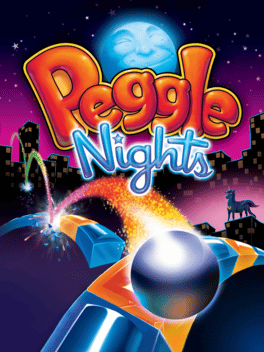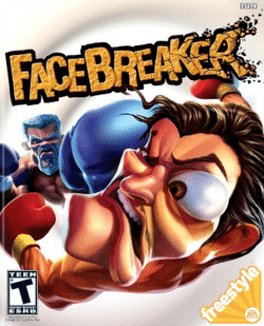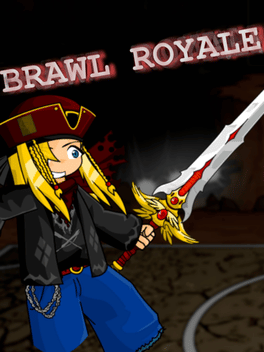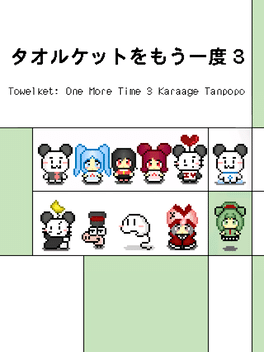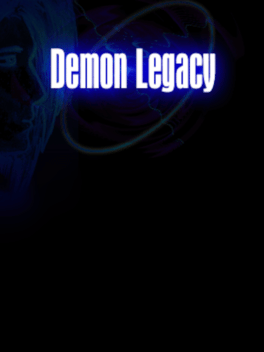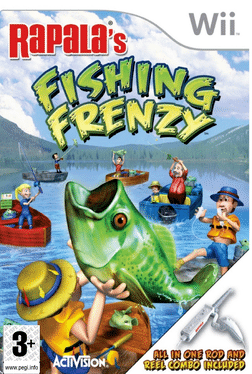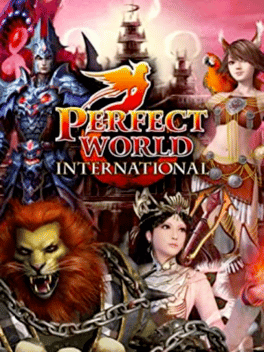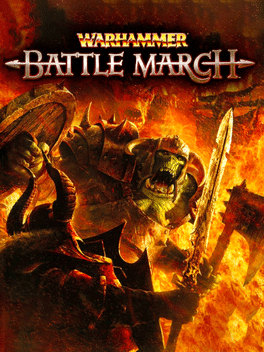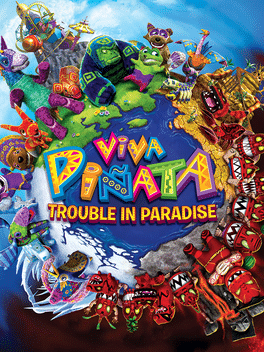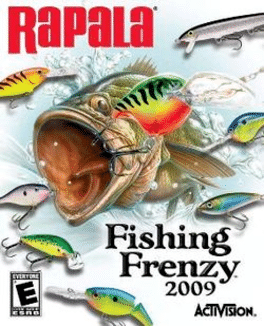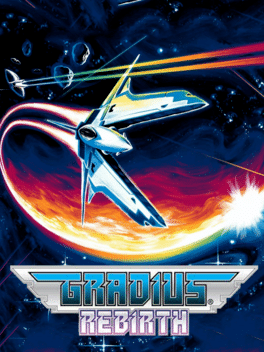New Games - Page 9938
-
Peggle Nights
2008
Peggle Nights
2008
star 8.4The sun has set at the Peggle Institute, but the bouncy delight has just begun! Join the Peggle Masters on a dreamtime adventure of alter egos and peg-tastic action. Stay up late to aim, shoot and clear orange pegs, and bask in Extreme Fever glory under the silver moon. Then, put your Peggle skills to the ultimate test in Challenge mode. If you can master all that fevered action, play to your heart's content with Duel mode and Quick Play. Plus, you can stock your Trophy Room and revel in clickable replays for even more rebounding joy! Explore all 60 levels in Adventure mode Meet a new Peggle Master and learn a new Magic Power Test your skills in 60 challenges Unlock Duel mode to compete against friends and the computer Celebrate your Peggle prowess with clickable replays and a Trophy Room! -
Pirates vs. Ninjas Dodgeball
2008
star 5Pirates vs. Ninjas Dodgeball pits scurvy against ninjitsu and cutlass versus katana in action packed dodgeball, to settle the world’s oldest debate; who’d win -- Pirates or Ninjas? The game is played with seven different teams, including the Pirate and Ninja teams, as well as Zombies, Robots, Aliens, Monsters and Mushroom Men (from the Mushroom Men games, also published by SouthPeak). The battles take place across eight visually breathtaking arenas where players look to settle the score once and for all. -
FaceBreaker
2008
FaceBreaker
2008
star 6.3Arcade-style boxing! Fast, responsive controls let you brutalize and humiliate your opponent in seconds. Brawl for it all. Pugilze your way to the top in single-player mode. Ruin friendships in Couch Royale, or take on the world's best fighters online. Put your own face in the game or upload user-created boxers via EA Sports world. -
Battalion: Nemesis
2008
Battalion: Nemesis
2008
Battalion: Nemesis puts you in command of the Rapid Attack and Response unit commanded by Sergeant Tucker. Face off against the insidious Mullen in an epic 10 level campaign! There are a total of 16 levels to be played, where you can master the rules of tactical turn-based strategy combat. -
Brawl Royale
2008
Brawl Royale
2008
A traditional reflex-testing game, with very violent animations! Bash space to play. -
Towelket: One More Time 3 Karaage Tanpopo
2008
Towelket: One More Time 3 is a story-heavy adventure/role-playing game made in RPG Maker 2000. -
Demon Legacy
2008
-
Bloons TD 3
2008
Bloons TD 3
2008
star 5.2It's here. After 319 days, 32 Million plays and countless requests for a sequel to Bloons Tower Defense 2, Ninja Kiwi is proud to present Bloons Tower Defense 3. This time, use the all new towers and upgrades to work your way through 8 all new tracks and 3 difficulty modes to achieve that total Bloon popping satisfaction. -
Silver Star Reversi
2008
-
Defendin' De Penguin
2008
Defendin' De Penguin
2008
From the creators of Purr Pals and Baby Pals comes Defendin' De Penguin, the first Real Time Strategy game on the Wii. Help our hero, Little Blue fend off hungry creatures that are eager to steal his town's fish supply. To thwart these hungry animals, you'll strategically place defense mechanisms throughout the town with each possessing unique strengths that are geared for specific animals. With the perfect combination of tower utilization, defensive placement, timing and strategy, Little Blue's food supply will be saved and you won't go home hungry. First real time strategy geared for kids 12 and under Utilize an array of environmental ammunition to deter the enemy Use our hero Little blue to upgrade a tower or fish for money or retrieve special objects Use wits and strategy to defend your town from hungry invaders Upgrade towers to increase attack range and strength as enemies gain strength too -
Rapala's Fishing Frenzy
2008
BATTLE TROPHY FISH BEYOND BELIEF! Travel to the World's top fishing hotspots and put your angling skills to the ultimate test in the "hottest tournaments on water!" Hang on for the fight of your life as you experience rod-bendin', heart-poundin', fish-fightin' action! -
Perfect World International
2008
Perfect World International, the visually stunning free-to-play online game with unparalleled character customization and amazing gameplay. -
Wizard101
2008
Wizard101
2008
star 3.5Wizard101 is a 2008 massively multiplayer online role-playing game created by KingsIsle Entertainment. In the game, players take on the role of students of Ravenwood School of Magical Arts in order to save the Spiral, the fictional galaxy in which the game is set, from various threats. -
Warhammer: Battle March
2008
star 7Warhammer: Mark of Chaos - Battle March is the Xbox 360 version of the Windows-only game Warhammer: Mark of Chaos slipstreamed with the Windows-only expansion Warhammer: Mark of Chaos - Battle March. For the Xbox 360 version of the game both were combined into a single release and they are not available separately for the platform. A console RTS based in the Game's Workshop's Warhammer universe. The game is notable for featuring no resource collection or classic RTS - style economy at all, and instead focusses on putting the player straight into the action. Fans of the table top game will notice that this game simulates a real time version of that same game. -
Warhammer: Mark of Chaos - Battle March
2008
star 6.1During the single player campaign the player takes over the control of the Empire, the Orcs & Goblins and the Legions of Chaos. But in multiplayer all of the now six races (Legions of Chaos, The Empire, High Elves, Dark Elves, Skaven and Orcs & Goblins) are available to fight in the new multiplayer mode called "World Domination. There the old world is divided into several dozen territories and the goal is of course to gain control over every one of them. But this is no game mode that only a few players play. Instead the map is hosted by the developers and every player can join in the fight. Once a player chose a race, he can then attack one of the enemy territories which then activates a normal skirmish battle with different victory conditions. Once a race has won a hundred battles in that territory, it gains control over it. Depending on the territory, the race then gains a bonus like a higher gold production ratio or a 10% increase in fighting moral. -
Galactic Bowling
2008
Galactic Bowling
2008
Galactic Bowling is an exaggerated and stylized bowling game with an intergalactic twist. Players will engage in fast-paced single and multi-player competition while being submerged in a unique new universe filled with over-the-top humor, wild characters, unique levels, and addictive game play. The title is aimed at players of all ages and skill sets. Through accessible and intuitive controls and game-play, Galactic Bowling allows you to jump right into the action. A single-player campaign and online play allow you to work your way up the ranks of the Galactic Bowling League! Whether you have hours to play or only a few minutes, Galactic Bowling is a fast paced and entertaining experience that will leave you wanting more. -
Viva Piñata: Trouble in Paradise
2008
star 7.9The original Rare Ltd. team behind Viva Piñata has reunited to bring gamers Viva Piñata: Trouble in Paradise, the newest and most fun piñata adventure to date. Available exclusively on Xbox 360, Viva Piñata: Trouble in Paradise reinvigorates a colorful and engaging gaming experience on the Xbox 360 platform. Now with full cooperative and online gameplay modes, the Viva Piñata franchise opens its doors even wider with a new game that provides hours of fun for gamers of all ages, fans of the animated series and animal lovers alike. Return to magical Piñata Island. Unfortunately, not all is well on the island, as Professor Pester and his gang of Ruffians have wiped out Piñata Central's computer records, posing a threat to parties everywhere. Rebuild the computer database and thwart Professor Pester's evil plot by sending piñatas at full candiosity to parties all around the world. Build and maintain your piñata gardens—using your creativity and imagination to attract, trap, protect, train, and manage more -
Infinite Undiscovery
2008
Infinite Undiscovery
2008
star 6.3Mistaken for a renowned hero, Capell is thrust into a conflict to sever the chains that bind the moon to his world. Traverse a seamless, expansive world with a party formed from 18 characters. Rise against the wicked Order of Chains in fierce real-time combat, but beware not all battles are won by force. The most obvious solution is rarely the right move. Shatter the chains and release the Order's grip on the world. -
Gradius ReBirth
2008
Gradius ReBirth
2008
star 8Blast your way through levels filled with alien spaceships and otherworldly creatures in this retro side-scrolling shooter. Pick your weapons carefully and upgrade them to create a devastating arsenal of space-aged weapons that will aid you in your challenging mission. Players can post their high scores to worldwide leader boards via Nintendo Wi-Fi Connection and see where they rank against all the other Gradius ReBirth players. Test your skills with Gradius ReBirth and see if you have what it takes to beat this action-packed arcade shooter.

